Andrew Burgess has been the subject of a couple recent posts, and I figure it’s high time to actually take a close look at one of his firearms designs. Specifically, the folding shotgun. The first shotgun specifically designed to be a fighting weapon instead of a sporting arm, Burgess’ shotgun was patented in January of 1893 and first appeared on the market in 1894. It featured a 20″ barrel, 6-round tube magazine under the barrel, and unloaded weight of just over 6 pounds (2.7kg). This compact configuration was specifically intended for use by messengers, bank guards, police, cavalry troops, and others who could exploit the handiness of a compact shotgun. The size was complemented by the gun’s folding mechanism.


This folding was accomplished by putting a hinge just behind the end of the chamber. The top of the barrel and magazine assembly had four machined thread-like parallel grooves which fit into matching slots in the receiver assembly, similar to many other take-down shotgun designs. However, the pivoting pin at the bottom and the spring=loaded latch that Burgess added to the design allowed the gun to be carried in a folded state (with the magazine fully loaded) and snapped into a locked firing condition with a flip of the wrist. In fact, Burgess sold a belt holster for the shotgun to allow one to carry it under a coat in just that manner.
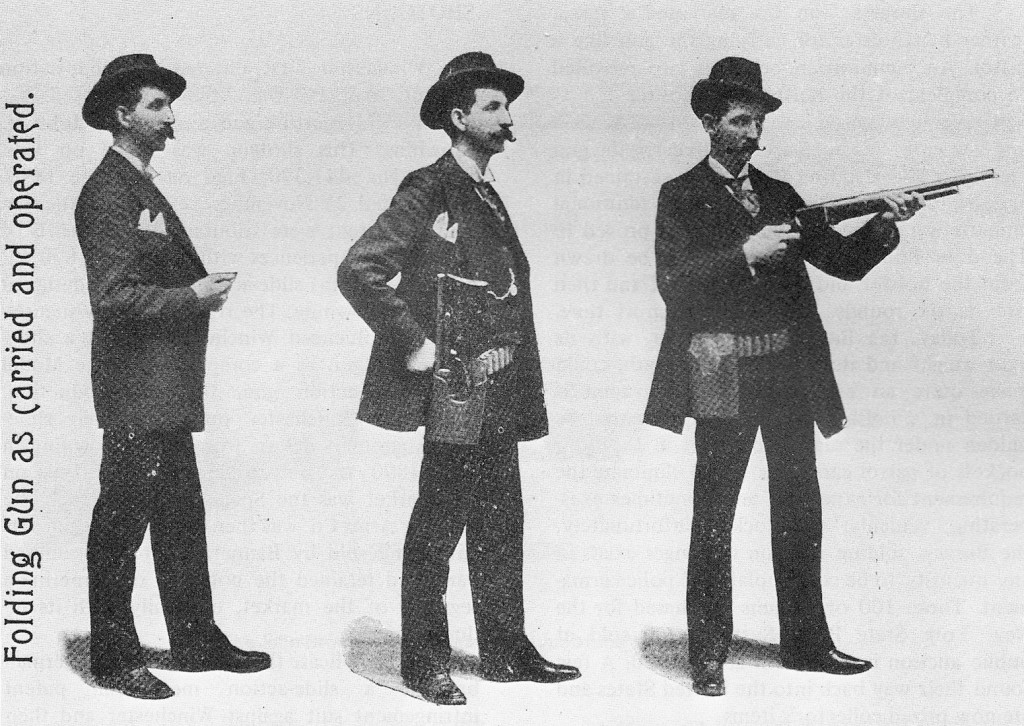
One of the more significant purchases for Burgess folding shotguns was secured with the aid of just such a holster. Burgess salesman Charlie Dammon – an impressive exhibition shooter – made an appointment with then New York City Police Board President Theodore Roosevelt in 1885, and arrived concealing a loaded Burgess in a holster under his coat. After exchanging a few greetings, Dammon thoroughly startled Roosevelt by whipping out the gun, snapping it shut, and blasting six blanks into the ceiling of the office. Roosevelt, always one to be enthusiastic about weapons technology, promptly order one hundred of the guns for use in the New York State Penal System (these were eventually sold at auction in Canada around 1920).
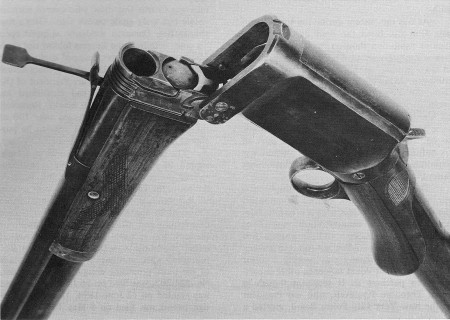
The other element that really makes the Burgess gun stand out from other pump shotguns (particularly today, when we have many more around than there were in the 1890s) is its unusual pump mechanism. Because Samuel Roper (partner of Christopher Spencer) had patented the now-ubiquitous slide wrapped around the magazine tube, Burgess had to find an alternative. What he did was to make the grip and trigger guard into the slide assembly. A sleeve wrapped around the wrist of the stock, and the shooter would pull this back to open the action and then push it back into place to load a new shell. Burgess had tried to challenge Roper’s patent in court, but failed (where Winchester would later succeed through a technicality, allowing them to use the now-standard slide mechanism in their 1893 and 1897 models).
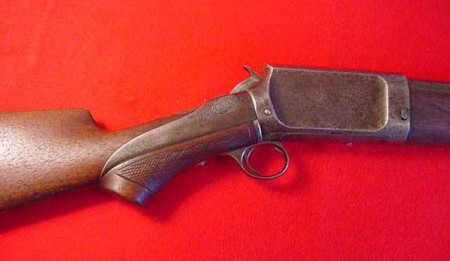
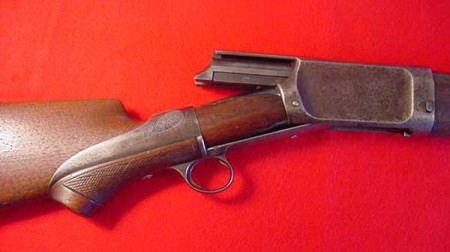
These shotguns were manufactured and sold from 1894 until 1899 by the Burgess Gun Company in Buffalo, New York. During this time Burgess made both folding shotguns and a non-folding takedown sporting version of the gun with 28″ and 30″ barrels. In addition, a very small number of pump-action rifles using the same mechanism (although not folding) were made in .30-30 and .45-70 calibers. The shotguns are fairly rare today, with folding models particularly hard to find – and the rifles are extremely scarce. In 1899, Burgess decided to retire, and sold his company and factory to the Winchester company. They promptly repurposed what tooling and machinery they could, scrapped the rest, and shut down the factory.
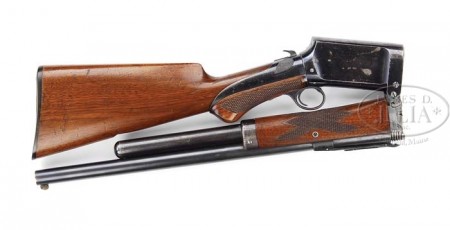
The Burgess shotgun is little-known today, with its more commercially successful contemporary Winchester 1897 competitor being far more common. However, the Burgess really was one of the first of the truly combat-oriented shotguns. In addition to being concealable and compact, it was capable of very rapid fire. Burgess’ exhibition shooters would regularly perform feats such as breaking six clays thrown simultaneously, or firing rapidly enough to have all six empty hulls in the air simultaneously – feats which were simply not practical with the Spencer pump shotguns or the Winchester 1893. Even today, it remains a practical fighting shotgun (to the extent surviving examples can be found). Perhaps someone will decide to start manufacturing reproductions so we can all enjoy shooting them?
Technical Specs
Caliber: 12ga (.30-30 and .45-70 in very rare rifle examples)
Action: Pump, exposed hammer
Barrel length: 20″ (28″ and 30″ for sporting versions)
Overall length: approx. 40″
Weight, unloaded: approx. 6lb (2.7kg)
Magazine capacity: 6 (2.5″ shells)
Patents
US Patent 521,202 (A. Burgess, “Folding Gun”, June 12, 1894)
US Patent 524,800 (A. Burgess, “Folding Magazine Gun”, August 21, 1894)
Resources
Swearengen, Thomas F. The Worlds Fighting Shotguns Chesa Ltf, Hong Kong, 1978.
Flayderman, Norm. Flayderman’s Guide to Antique American Firearms and Their Values Follett Publishing Co, Chicago, 1977.

can you get any technical drawnings on the action. It seems to have a number of advantages over conventional pumps.
The closest thing I have to technical drawings at this point are the patents.
Was there any sort of safety engaged as the slide was pulled to the rear? It seems like the trigger could become undesirably involved in that motion.
I don’t know for sure, but I expect that the trigger would be mechanically disengaged from the sear as soon as movement started.
might want to include this in the article https://www.youtube.com/watch?v=HXvmGtLYwKA
I had never seen or heard about these guns until tonight I was looking at rare guns, these are nice guns and beautiful work. my wife wants one of each until I told her the price. its nice to look at something different thanks for showing them. bob
The western lawman Pat Garret, the killer of Billy the Kid, was said to have a Burgess folding shotgun in his wagon when he was shot and killed in New Mexico in the early 1900’s.
What is the current estimate price for the Burgess Folding Gun?